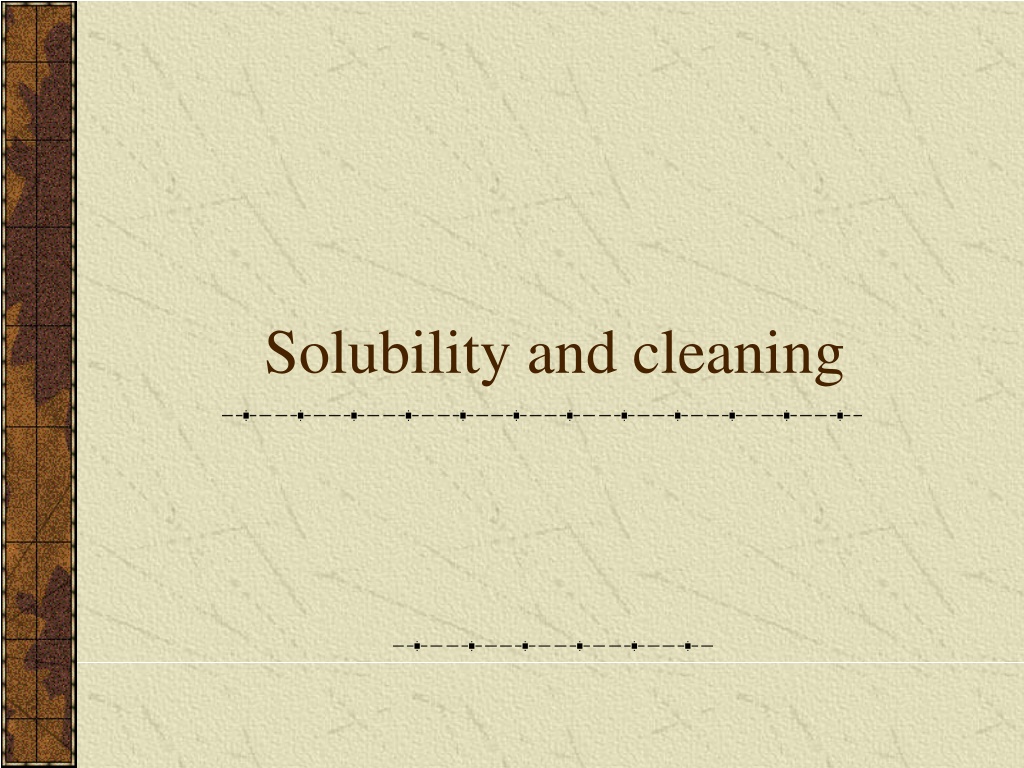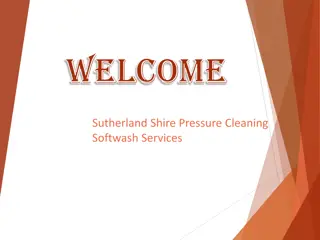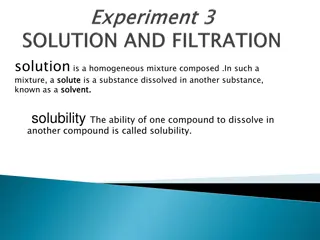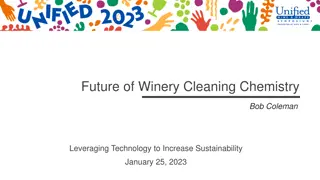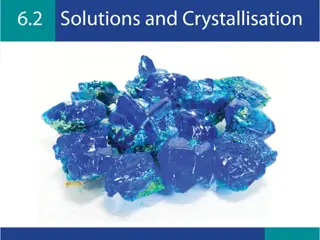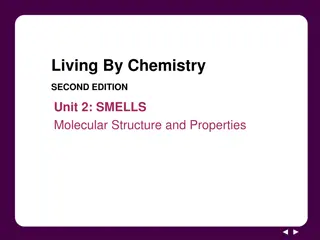Solubility, Polarity, and Cleaning in Chemistry
Explore the concepts of solubility in different solvents, the role of polarity in dissolving compounds, and how cleaning agents work based on their polar or nonpolar nature. Discover how soap molecules form micelles to remove stains effectively, and learn about emulsions like mayonnaise where oil and vinegar mix with the help of emulsifiers.
Download Presentation

Please find below an Image/Link to download the presentation.
The content on the website is provided AS IS for your information and personal use only. It may not be sold, licensed, or shared on other websites without obtaining consent from the author.If you encounter any issues during the download, it is possible that the publisher has removed the file from their server.
You are allowed to download the files provided on this website for personal or commercial use, subject to the condition that they are used lawfully. All files are the property of their respective owners.
The content on the website is provided AS IS for your information and personal use only. It may not be sold, licensed, or shared on other websites without obtaining consent from the author.
E N D
Presentation Transcript
Vocabulary Soluble/miscible- will dissolve in a solvent Insoluble/immiscible- will not dissolve in a solvent ~Both of these terms require a solvent For example vitamin A is a fat soluble vitamin, meaning it will dissolve in oils (fat) However it is insoluble in water Water soluble (vitamin C) vitamins dissolve in water but are insoluble in oils.
Polarity of solvent molecules and compounds can either be polar or nonpolar. General rule- like dissolves like polar dissolves polar; nonpolar dissolves in nonpolar.
Both polar and nonpolar Hydrogen is always on the outside so it has the same charge H C H + Methane nonpolar H H H H Hydrogen is on one side oxygen is on the other. Water polar O - soap molecule O= this has a Y shape (3 ends) O- This side is polar, two ends with different charges. This side is a long nonpolar branch.
Cleaning Washing is normally dissolving the stain material. Hard stains to get out are usually nonpolar. Dry cleaners use a nonpolar solvent (that is a liquid) that doesn t harm most materials (tetrachloroethene) Soap is both polar and nonpolar.
Soap The nonpolar tail sticks in the stain, dissolving it. Leaving the polar head exposed. Many more soap molecules do this. This is called a soap micelle. So water encounters a sphere of nonpolar material with a polar coating on it (micelle). the water picks up the polar sphere and sweeps it away.
Soap Micelle Nonpolar part of soap dissolves nonpolar stain Soap molecule Nonpolar part Polar part Outside edge is polar so it dissolves in water Nonpolar stain
Emulsions This creates an emulsion (colloidal suspension of liquids) Mayonnaise is another emulsion. Mayonnaise is made up oil and vinegar (and other things) but an emulsifier allows them to mix in a colloidal suspension.
Polar stains Water cleans polar stains itself. Soap s polar side does not clean polar stains. Soap only works in conjunction with water. The soap must be dissolved in the water to dissolve a nonpolar stain.
Hand sanitizer (Purell) vs. soap The purpose of soap is to help you remove stain material. Hand sanitizer is an alcohol based antiseptic. The purpose is to kill any bacteria present. The remains of the bacteria are still there. In a chemistry room, we need to remove any chemical that may irritate your skin. Therefore you should wash with soap and water after a lab
More on Soap Your body naturally secretes oil (sebum) This oil can cover a polar stain and make it difficult to clean off. Soap is very good at dissolving the oil off your skin, so you can clean what is underneath.
Detergents Soaps are made from naturally occurring fats and sodium hydroxide. Detergents are made from mixing crude oil products or synthetic oils and sodium hydroxide. Detergents came into heavy use during World War II when oils were in short supply.
Which is better? Soap will react with some ions in hard water , water with heavy metal ions, to form an insoluble film ~soap scum Detergents will not. Soaps tend to be better for the environment (more biodegradable) Soaps tend to be less harsh on your skin We use detergents for nonliving things, and soap for bathing.
Solubility ~A measure of how soluble something is. Nothing is completely soluble or completely insoluble. Increasing the temperature normally increases the amount of a solid solute a solution can hold.
Gases dissolved in a liquid Colder solutions hold more of a gaseous solute. Heating a solution forces gases to come out of solution (pre-boiling bubbles) Higher pressure solutions can hold more gases. ~Why a pop can fizzes when opened
Decompression Sickness If you dive deep into the ocean (submarine or scuba) the pressure increases More gases will dissolve in the fluids of your body If you rise too quickly, gases dissolved in the fluids of your body will come out of solution This painful and deadly situation is called decompression sickness or the bends
Saturation Saturated solution- solution that has all the solute it can hold. If any more is added it will not dissolve. Supersaturated solution- a soln. holding more solute than it should Made by heating a solution to dissolve more solute and then cooling it. If you disturb a supersaturated solution the solute will fall out of solution.
Solubility CurveGraph of grams of solute vs. temperature 100 KNO3 80 KCl 60 g of solute per 100 g of water 40 NaCl 20 NH3 0 0 20 40 60 80 100 Temperature (oC)
